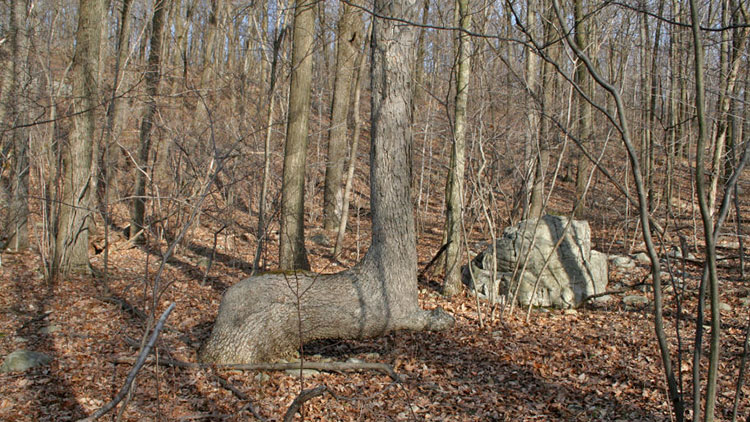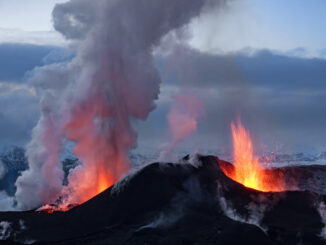
How do you find your way from place to place? You might use landmarks. For example, you might know that you can get to your friend’s house by walking three blocks from a park and turning left. Long before Europeans came to America, Native Americans used landmarks to find their way from place to place. In some cases, they grew their own landmarks!
Trail Marker trees were created by Native Americans to point out the direction of a special or important place of interest and help guide them to the direction of travel. These places include a water source, a burial site, and a trail crossing point, for example.
Native Americans would take a sapling, bend it over horizontally and then tie it to the ground pointing in the direction of the place they want to identify. They would then bend the sapling vertically by tying it to a nearby tree. The tree would then grow in that shape. The nose of the tree, the part of the tree just below the vertical bend, points to the direction of interest.
The tree in the picture above is located in Sussex County, New Jersey. It was most likely created by the Lenape Indians to point to a location where healing ceremonies took place. Researchers believe this is a Ceremony Tree because it is a far distance from known Lenape villages. Native Americans would identify land considered to have spiritual or healing properties, often a far distance from their village, and this tree would serve as a guide to that land.
This tree was rediscovered in 2007 and in 2009 the pictures and location were analyzed by the President of the Delaware Nation, who confirmed that the tree is indeed a Trail Marker tree and was identified as the first Trail Marker tree cataloged in New Jersey. The tree is estimated to be between 300 and 400 years old. Since that time, 10 additional trees have been discovered in New Jersey.
What Do You Think? What do trail marker trees tell you about Native American’s relationship to the environment?
Photo Credit: John Schumacher



